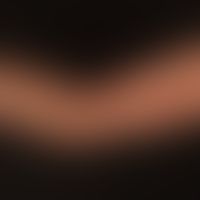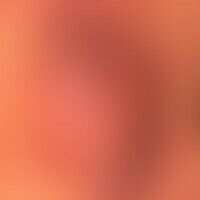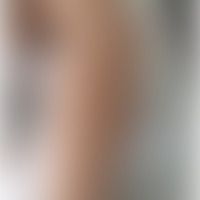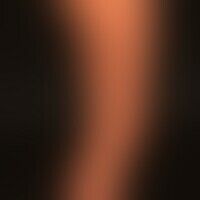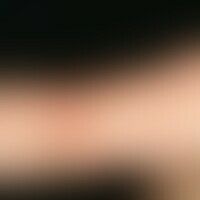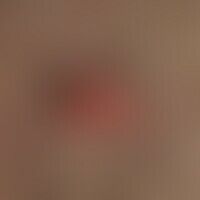Image diagnoses for "Plaque (raised surface > 1cm)"
571 results with 2867 images
Results forPlaque (raised surface > 1cm)
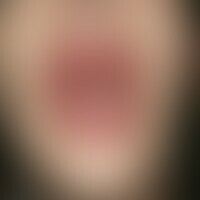
Chronic mucocutaneous candidiasis B37.2
candidiasis, chronic mucocutaneous (CMC). pronounced doughy and persistent swelling of the lips with several chronic rhagades in Crohn's disease. whitish, flat deposits on the base and back of the tongue. pearlèche on both sides.
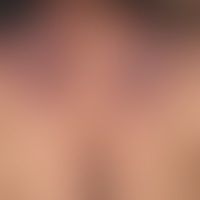
Pemphigus chronicus benignus familiaris Q82.8
Pemphigus chronicus benignus familiaris: chronic but variable, greasy, sharply defined, red, rough plaques with linear erosions.

Toxic epidermal necrolysis L51.2
Toxic epidermal necrolysis. mostly picture of erythema exsudativum multiforme. necrolytic detachment of the skin beginning at the knee and lower leg.
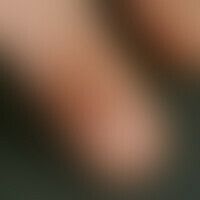
Contagious impetigo L01.0
Impetigo contagiosa. red, erosive, rough, partly crust-covered plaque with rhagades and scaly crusts, persistent for several weeks, resistant to therapy. evidence of Staphylococcus aureus.
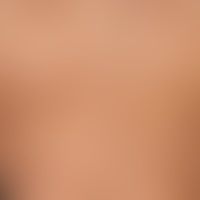
Amyloidosis macular cutaneous E85.4
Amyloidosis macular cutaneous: Large, long-standing, continuously spreading, blurred, symmetrical, light to medium brown spots and plaques; histological evidence of the amyloid.
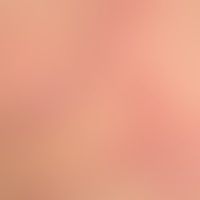
Parapsoriasis en plaques large L41.4
Parapsoriasis en plaques large-hearth inflammatory form with transition to a mycosis fungoides.

Leprosy reaction A30.8
Leprosy reaction type I: Cell-mediated inflammatory (flare-up) reaction in existing leprosy foci, here lepromatous leprosy.
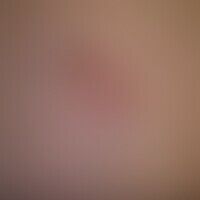
Bowen's carcinoma C44.L5
Bowen's carcinoma: on years of existing, less symptomatic scaly plaque, increasing infiltration with verrucous keratotic deposits (invasive carcinoma development). 75-year-old patient with CML and permanent treatment with Leukeran.
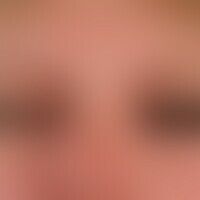
Contact dermatitis (overview) L25.9
Contact dermatitis: Heavily lichenified eczema plaques in the area of the upper and lower eyelids in chronic, contact-allergic eczema; evidence of sensitization to various eyelid cosmetics.

Transitory acantholytic dermatosis L11.1
Transitory acantholytic dermatosis (M.Grover): moderately itchy clinical picture with disseminated itchy papules and also papulo vesicles, which has been present for a few weeks; Nikolski phenomenon negative.
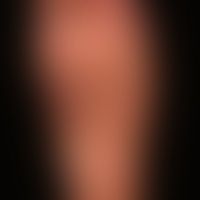
Dyshidrotic dermatitis L30.8
eczema, dyshidrotic: chronic recurrent, hyperkeratotic eczema of the hands and feet. here changes of the sole of the foot. recurrent episodes with itchy blisters. no signs of atopy. no contact allergy. no atopic diathesis.

Dermatomyositis (overview) M33.-
Dermatomyositis (overview): Extensive, indicated striated erythema with reddish-livid papules which confluent in the region of the end phalanges to form extensive plaques; strongly pronounced nail fold capillaries.
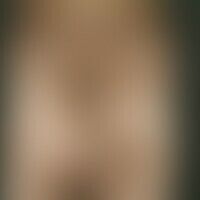
Melanosis neurocutanea Q03.8
Melanosis neurocutanea. Multiple congenital melanocytic giant nevi. Blotchy pattern with no midline boundary.
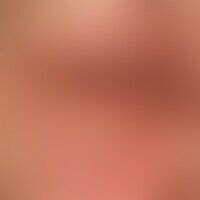
Eyelid dermatitis (overview) H01.11
Chronic contact allergic eyelid dermatitis: therapy-resistant, chronic dermatitis of the eyelid caused by beta-blocker-containing eye drops (for glaucoma). Only by changing the therapeutic agent could a complete healing of the chronic dermatitis be achieved. In the meantime, a 1% hydrocortisone vaseline was applied twice a day.

Atopic dermatitis in children and adolescents L20.8
Childhood eczema atopic: skin lesions in a 12-year-old boy. Back of the hand gray, dry, lichenified. No dermatitis. No itching.
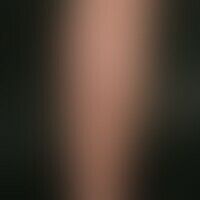
Erythema migrans A69.2
Erythema chronicum migrans. large plaque, which has been growing steadily on the periphery for about 8 months, only slightly increased in consistency, homogeneously brownish in the centre, somewhat atrophic, marked by an increasingly consistent erythema zone at the edges. only occasionally "slight pricking" in the lesional skin.
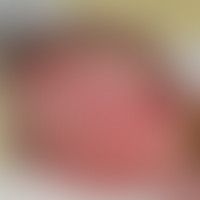
Infant haemangioma (overview) D18.01
Haemangioma of the infant (series: 3-month-old infant); initial findings of a large hemangioma with little elevation.
